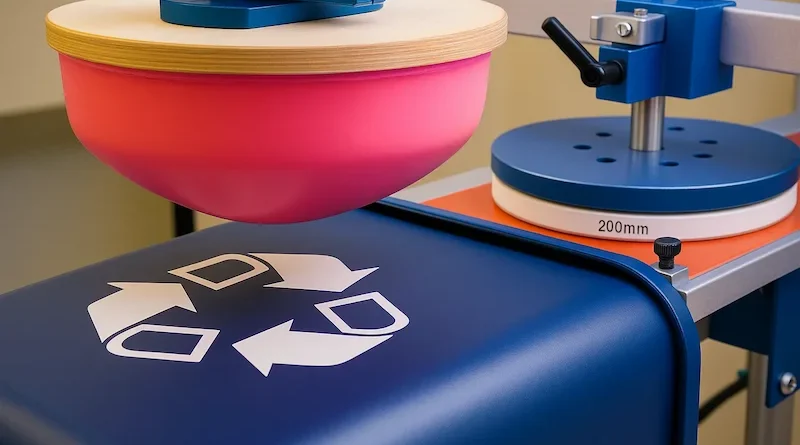Why Pad Printing Is Ideal for Irregular and Curved Surfaces
Key Takeaways
- Pad printing leverages a flexible silicone pad to print on complex, non-flat surfaces, offering unmatched adaptability.
- The method delivers sharp, precise images, making it suitable even for highly detailed and intricate designs.
- Its compatibility spans a wide array of materials, ensuring versatility across numerous sectors.
- Industries from electronics to medical devices rely on pad printing for its accuracy and durable results.
Creating clear, consistent markings on uneven items has long been a challenge in manufacturing, product customization, and branding. Traditional printing methods often struggle to apply detailed images onto objects with contours, textures, or non-flat surfaces. This is where a more adaptable approach becomes essential, enabling industries to maintain precision while working with complex shapes found in everyday products, such as medical tools, promotional items, and electronic components.
Unlike flat-surface printing techniques, this method transfers ink through a flexible silicone pad that conforms to curves, angles, and recesses without distorting the design. Due to this versatility, many manufacturers rely on well-designed pad printing equipment to achieve consistent results across a wide range of materials and shapes. Its ability to maintain accuracy while adapting to irregular surfaces makes it a practical choice in various production environments.
Understanding Pad Printing
Pad printing, also known as tampography, operates through an indirect offset process. It begins with an image etched onto a printing plate, known as a cliché. Ink is applied to this plate, filling the etched image. When a silicone pad presses onto the plate, it picks up the inked image, which is then deposited on the intended three-dimensional object when the pad presses onto it. This seemingly simple process is what enables pad printing to perform where other techniques cannot.
- Image Etching: The artwork or design is chemically or laser-etched onto a thin plate, providing the template for inking.
- Ink Application: Specialized inks are swept over the plate, filling the etched image area while excess ink is removed.
- Image Transfer: The silicone pad presses onto the plate, picking up the ink, and then transfers it to the target object.
- Image Deposition: The pad compresses onto the object’s surface, transferring the ink in a controlled and accurate manner, even across curves and textures.
The real innovation lies in the silicone pad’s ability to adapt its shape, conforming closely to uneven contours, recessed areas, or rounded surfaces. This flexible touch ensures image fidelity and consistent coverage, making pad printing unrivaled for objects that defy flatness.
Advantages of Pad Printing on Irregular Surfaces
Adaptability and Conformability
The conformability of the silicone pad is paramount; it enables seamless printing on objects such as golf balls, pen barrels, syringes, curved instrument panels, and various promotional products. This flexibility enables the capture of complete and continuous images, unlike traditional methods that often show distortion or gaps.
Precision and Detail
Pad printing is renowned for its ability to render minute details, from fine lines to sharp text, underscoring its significance in industries where legibility and aesthetics are paramount. Even decorative textures or micro-markings can be accurately reproduced.
Material Versatility
From plastics and metals to glass, ceramics, and rubber, pad printing’s reach spans materials that are tough to decorate otherwise. Its adaptable ink formulations make it the process of choice across countless manufacturing environments.
Durability
Not only does pad printing excel in detail, but it also delivers prints that withstand abrasion, repeated use, chemicals, and environmental stress. This is crucial in demanding sectors such as the automotive and medical device industries, where markings must withstand the test of time.
Applications Across Industries
Electronics manufacturers rely on this method for branding, labeling, and icon placement on device panels, switches, and keys, where small, detailed shapes are common. In healthcare, it ensures precise, hygienic, lasting markings on syringes, surgical instruments, and diagnostic components. The automotive industry also benefits, as instrument clusters, dashboards, knobs, and switches require clear, durable markings even on complex shapes. For consumer goods such as toys, sports equipment, small appliances, and gadgets, it produces vibrant, durable images on curved, recessed, or uniquely shaped surfaces. These applications highlight its versatility in helping manufacturers meet branding, functional, and regulatory requirements across a diverse range of products.
Challenges and Considerations
Achieving strong ink adhesion across different materials involves proper preparation. This includes selecting compatible inks, surface treatments like plasma conditioning or primers—especially for plastics and metals—and choosing the appropriate silicone pad. The pad must be clean, hard, and shaped to match the item’s contours, often requiring custom pads for complex designs. Precise registration and alignment between the pad and substrate are essential, especially in high-volume or automated production, to prevent misprints. Although these steps demand technical skill and the right tools, they ensure reliable, high-quality results that enhance both the appearance and functionality of the product.
Conclusion
As products become more ergonomically designed and visually sophisticated, the demand for printing solutions that can handle non-flat surfaces will continue to increase. Pad printing is positioned at the forefront of this evolution, merging versatility, quality, and durability to serve the needs of a broad spectrum of industries. Whether producing consumer décor, medical information, or technical labels, this process assures both manufacturers and consumers of consistent results, regardless of the surface at hand. For those looking to streamline production and expand branding opportunities, understanding and implementing pad printing can be the decisive factor in product success.
Visit the rest of the site for more interesting and useful articles.

